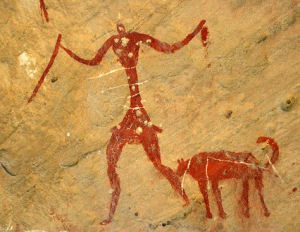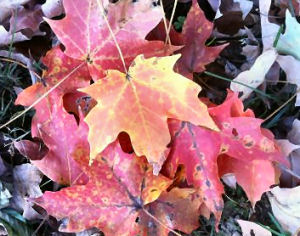
Appearing in Nature Communications, a new study of dog fossils suggests that the evolutionary path of whole groups of predators can be a direct consequence of climate change. “It’s reinforcing the idea that predators may be as directly sensitive to climate and habitat as herbivores,” said study co-author Christine Janis, professor of ecology and evolutionary biology at Brown University. “Although this seems logical, it hadn’t been demonstrated before.”
The climate in North America’s heartland 40 million years ago was warm and wooded. Dogs are native to North America. The species of the time, fossils show, were small animals that would have looked more like mongooses than any dogs alive today and were well-adapted to that habitat. Their forelimbs were not specialized for running, retaining the flexibility to grapple with whatever meal unwittingly walked by.
But beginning just a few million years later, the global climate began cooling considerably and in North America the Rocky Mountains had reached a threshold of growth that made the continental interior much drier. The forests slowly gave way to open grasslands.
Did this transition affect the evolution of carnivores? To find out, lead author Borja Figueirido and the research team examined the elbows and teeth of 32 species of dogs spanning the period from 40 million years ago to 2 million years ago.
They saw clear patterns: At the same time that climate change was opening up the vegetation, dogs were evolving from ambushers to pursuit-pounce predators like modern coyotes or foxes – and ultimately to those dogged, follow-a-caribou-for-a-whole-day pursuers like wolves in the high latitudes.
“The elbow is a really good proxy for what carnivores are doing with their forelimbs, which tells their entire locomotion repertoire,” Janis explained.
The telltale change in those elbows has to do with the structure of the base where the humerus articulates with the forearm, changing from one where the front paws could swivel (palms can be inward or down) for grabbing and wrestling prey to one with an always downward-facing structure specialized for endurance running. Modern cats still rely on ambush rather than the chase (cheetahs are the exception) and have the forelimbs to match, Janis said, but canines signed up for lengthier pursuits.
In addition, the dogs’ teeth trended toward greater durability, Figueirido’s team found, consistent perhaps with the need to chow down on prey that had been rolled around in the grit of the savannah, rather than a damp, leafy forest floor.
The study suggests that predators do not merely evolve as an “arms race” response to their prey. They don’t develop forelimbs for speedy running just because the deer and the antelope run faster. While the herbivores of this time were evolving longer legs, the predator evolution evident in this study tracked in time directly with the climate-related changes to habitat rather than to the anatomy of their prey species. After all, it wasn’t advantageous to operate as a pursuit-and-pounce predator until there was room to run. “There’s no point in doing a dash and a pounce in a forest,” Janis noted. “They’ll smack into a tree.”
If predators evolved with climate change over the last 40 million years, the authors argue, then they likely will have to continue in response to the human-created climate change underway now. The new results could help predict the effects we are setting in motion. “Now we’re looking into the future at anthropogenic changes,” Janis said.
Related:
Discuss this article in our forum
Mammals may shrink with warming climate
This is your brain on dogs
Domestication of dogs may explain success of early humans


















Comments are closed.